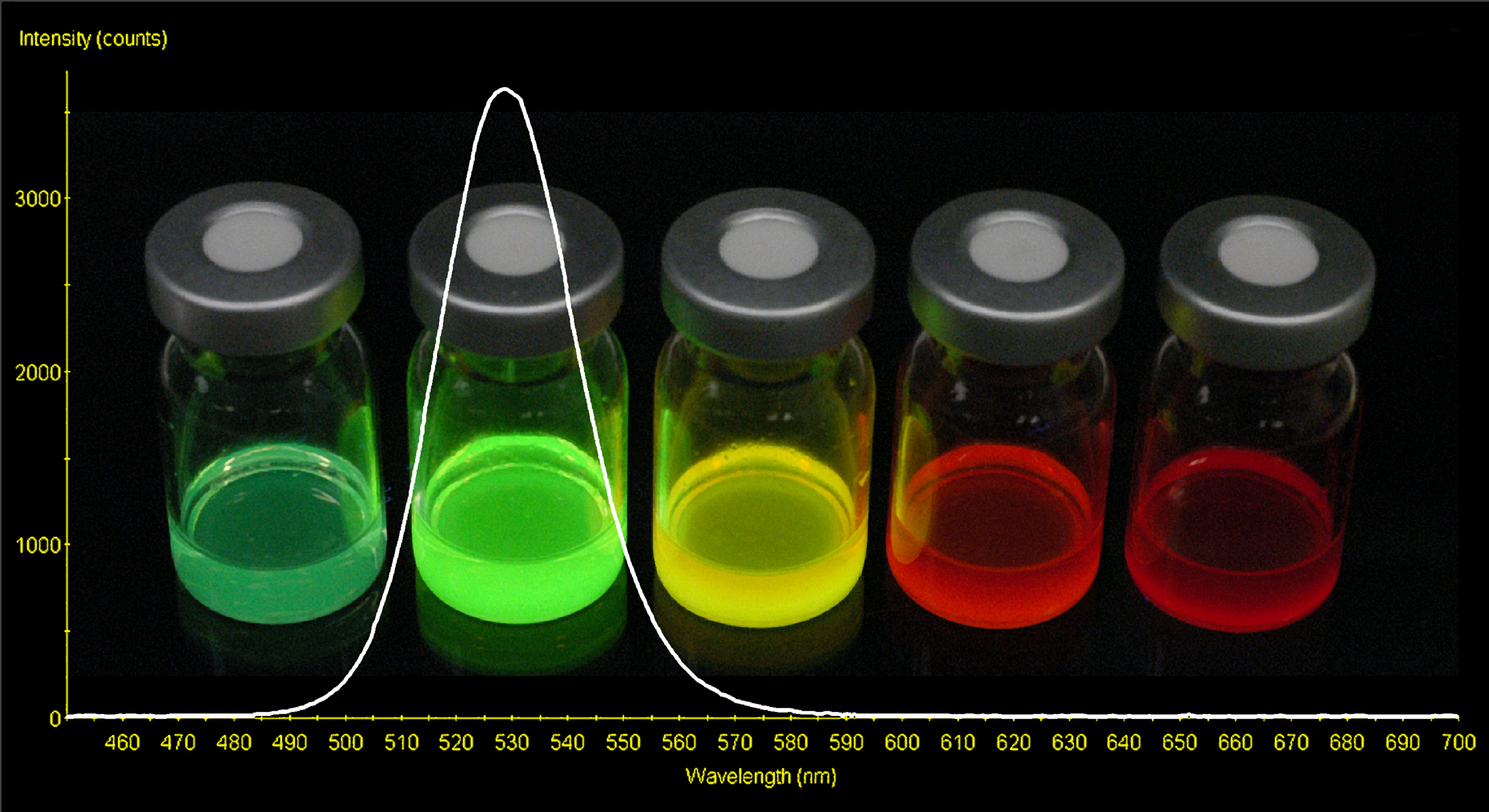Though the research is in its earliest stages, a therapy using nanoparticles may one day improve the visual prognosis for retinitis pigmentosa (RP) patients. Encouraging preliminary work in patients with advanced RP was recently published in the journal Nanomedicine.
Quantum dots, sometimes referred to as “artificial atoms,” are nanoparticles that function like semiconductors by transporting electrons. They settle into the retina if they are injected in the eye, the international research team from the United States, United Kingdom and Mexico explained in their paper on the work. When light enters the eye, it is absorbed by the quantum dots in the retina, and the light energy is converted to electrical energy, they said.
 |
Quantum dots are metal nanoparticles that fluoresce in a variety of colors based on size. The cadmium dots here show a strong emission response in the green wavelengths. (Photo: NASA) |
Electrical stimulation has been shown to benefit degenerating retinas, as occurs in RP, so quantum dots may have the potential to improve or preserve vision in people with this condition, the investigators explained.
The open-label, fellow eye-controlled, first-in-human safety study enrolled five patients with end-stage RP and 15 participants with severe RP. The 20 subjects received either one or two intravitreal injections of 0.2µM or 2μM cadmium/selenium 655 Alt quantum dots.
No severe adverse reactions were attributed to the quantum dots.
In the end-stage patients, median BCVA was unchanged; however, in those with severe RP, mean BCVA improved from 6/398 to 6/177, vs. 6/147 to 6/144 in the fellow eye.
The study was not designed to determine efficacy, but the BCVA improvements in the severe group after both the first and second injections posed an interesting finding, investigators said.
“This may be a chance finding or possibly a learning effect, although the fellow eyes did not show a corresponding improvement. Further studies are needed to confirm this preliminary observation, and until that occurs, any conclusion on the efficacy of QDs is not possible,” researchers wrote in their paper.
If quantum dots were proven effective, they would be a first-in-class treatment for a progressive disease that is largely untreatable.
Although encouraging, these results are only preliminary, and a larger study is planned to explore these results, the researchers noted.
Jackson TL, Mandava N, Quiroz-Mercado H, et al. Intravitreal quantum dots for retinitis pigmentosa: a first-in-human safety study. Nanomedicine (Lond). 2021;16(8):617-26. |

